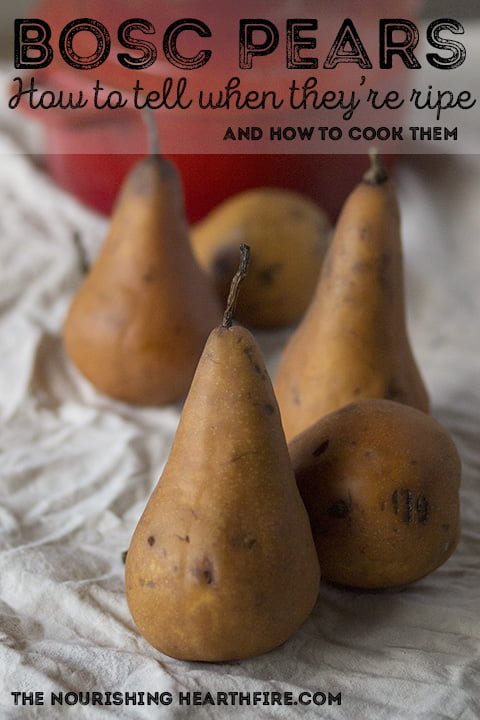So you’ve got a batch of fresh green beans in your hands, ready to be transformed into a delicious side dish. But there’s one problem – they’re squeaky! Don’t fret, because in this article, you’ll discover some handy tips to make those stubborn green beans tender and satisfyingly bite-worthy. Whether you’re a seasoned cook or just starting out in the kitchen, these simple techniques will ensure that your green beans are silky smooth and bursting with flavor. Say goodbye to the dreaded squeak and hello to perfectly cooked green beans every time!

Choosing the Right Green Beans
When it comes to preparing delicious green beans, starting with the right beans is crucial. Here are some important factors to consider when choosing your green beans:
Freshness is Key
Freshness is paramount when selecting green beans. Look for beans that are vibrant and crisp, with a bright green color. Avoid beans that appear wilted, discolored, or have blemishes. The fresher the beans, the better the flavor and texture will be in the final dish.
Opt for Young Beans
Young green beans are generally more tender and have a sweeter flavor compared to older beans. Look for beans that are slender and firm, with a smooth skin. These younger beans are more likely to cook evenly and retain their crispness.
Select Beans with Tender Texture
Texture plays a significant role in the overall enjoyment of green beans. Choose beans that feel pliable and snap easily when bent. Avoid beans that feel tough or have a fibrous texture, as they tend to be less enjoyable to eat. Opting for beans with a tender texture will ensure a pleasant and satisfying crunch when prepared.
Preparing the Green Beans
Before cooking the green beans, it’s important to properly prepare them to ensure the best results. Follow these simple steps to prepare your green beans:
Wash the Beans Thoroughly
Start by thoroughly washing the green beans under cool running water. This will help remove any dirt, debris, or pesticides that may be present on the surface. Gently rub the beans with your hands to ensure a thorough clean.
Remove any Stringy Edges
Some green beans may have stringy edges that can be tough and unpleasant to eat. To remove these, simply snap off the stem end of each bean and pull it along the length of the bean. This will remove any tough fibers, leaving you with a smooth and enjoyable texture.
Trim the Ends of the Beans
Trimming the ends of the green beans can help ensure even cooking and a more visually appealing presentation. Use a sharp knife or scissors to trim off the stem end of each bean, as well as the pointed tip at the other end. This step is optional but can make a difference in the final dish.
Cut the Beans into Desired Lengths
Depending on your cooking method or personal preference, you may choose to cut the green beans into shorter lengths. This can make them easier to handle and serve, especially for dishes such as stir-fries or salads. Use a sharp knife or scissors to cut the beans into bite-sized pieces, or leave them whole if desired.

Blanching the Green Beans
Blanching is a cooking technique that involves briefly boiling the green beans and then immediately transferring them to ice water to halt the cooking process. This method helps preserve the color, texture, and flavor of the beans while ensuring they are cooked to a desirable tenderness. Here’s how to blanch green beans:
Bring a Pot of Water to Boil
Fill a large pot with water and bring it to a rolling boil over high heat. Make sure the pot is large enough to accommodate all the green beans without overcrowding.
Add Salt to the Boiling Water
Before adding the green beans, generously season the boiling water with salt. This will enhance the flavor of the beans as they cook.
Plunge the Beans into the Boiling Water
Carefully add the prepared green beans to the boiling water. Stir gently to ensure they are evenly submerged.
Cook the Beans for a Short Time
Blanch the green beans for 2 to 3 minutes, or until they reach the desired tenderness. Keep in mind that the beans will continue cooking slightly as they cool, so it’s better to slightly undercook them during the blanching process.
Shocking the Beans
Shocking the blanched green beans is an essential step to immediately stop the cooking process and preserve their vibrant color. Here’s how to shock the beans:
Prepare an Ice Bath
Fill a large bowl or sink with cold water and add plenty of ice cubes. This will create an ice bath in which to quickly cool down the green beans.
Transfer the Blanched Beans to the Ice Bath
Using a slotted spoon or tongs, carefully transfer the blanched green beans from the pot of boiling water to the ice bath. Submerge them fully in the ice water to rapidly lower their temperature.
Let the Beans Sit in the Ice Bath
Allow the green beans to sit in the ice bath for about 2 to 3 minutes, or until they are completely cooled. This will ensure that the cooking process is halted and the beans retain their vibrant green color.
Drain and Pat Dry the Beans
Once the green beans have cooled, remove them from the ice bath and drain any excess water. Gently pat them dry using a clean kitchen towel or paper towels. The blanched and shocked beans are now ready to be used in various recipes.

Sautéing the Green Beans
Sautéing green beans is a quick and flavorful way to cook them while retaining their fresh crunch. Here’s how to sauté green beans:
Heat a Skillet or Pan
Place a large skillet or pan over medium-high heat and allow it to preheat. Adding the green beans to a hot pan will help ensure they cook quickly and evenly.
Add Oil or Butter to the Pan
Add a drizzle of olive oil, vegetable oil, or a knob of butter to the preheated skillet. The oil or butter will add richness and prevent the beans from sticking to the pan.
Add the Blanched and Shocked Beans
Carefully add the blanched and shocked green beans to the hot skillet. Spread them out in a single layer to ensure even cooking and browning.
Season the Beans with Salt, Pepper, and Spices
Season the green beans with salt, pepper, and any desired spices or herbs. Common choices include garlic powder, onion powder, paprika, or dried herbs like thyme or oregano. Customize the seasoning to suit your taste preferences.
Cook the Beans until Tender and Crisp
Sauté the green beans for about 4 to 6 minutes, stirring occasionally, until they are tender yet still crisp. Be mindful not to overcook them, as they can quickly become mushy. The sautéed green beans are now ready to be served as a delicious side dish or added to other recipes.
Steaming the Green Beans
Steaming green beans is a gentle and healthy cooking method that helps retain their nutrients and natural flavor. Here’s how to steam green beans:
Set Up a Steamer
If you have a dedicated steamer with a basket, follow the manufacturer’s instructions to set it up. Alternatively, you can use a pot with a steamer insert or a metal colander that fits snugly over a larger pot.
Add Water to the Steamer Pot
Fill the bottom of the steamer pot with enough water to reach just below the level of the steamer basket. Make sure the water does not touch the bottom of the basket to avoid boiling over.
Bring the Water to a Boil
Place the steamer pot on the stove over high heat and bring the water to a rolling boil. This will create the necessary steam to cook the green beans.
Place the Green Beans in the Steamer Basket
Carefully arrange the prepared green beans in a single layer inside the steamer basket. Make sure they are not overcrowded to ensure even steaming.
Cover and Steam the Beans until Tender
Place the steamer basket with the green beans on top of the pot, ensuring that it fits securely. Cover the pot with a lid and reduce the heat to medium. Steam the green beans for approximately 5 to 7 minutes, or until they are tender but still slightly firm. Check for doneness by poking a bean with a fork – it should easily slide in without resistance.

Roasting the Green Beans
Roasting green beans brings out their natural sweetness and adds a delicious caramelized flavor. Here’s how to roast green beans:
Preheat the Oven
Preheat your oven to 425°F (220°C) and position the rack in the middle. This high heat will ensure that the green beans roast and brown evenly.
Toss the Beans with Olive Oil and Seasonings
In a bowl, toss the prepared green beans with a drizzle of olive oil, coating them evenly. Season with salt, pepper, and any desired herbs or spices, such as garlic powder, thyme, or smoked paprika. Mix well to ensure all the beans are coated.
Spread the Beans on a Baking Sheet
Arrange the seasoned green beans in a single layer on a baking sheet. Make sure they are not crowded or overlapping, as this can prevent even roasting.
Roast the Beans until Tender and Slightly Browned
Place the baking sheet with the green beans in the preheated oven and roast for approximately 15 to 20 minutes, or until they are tender and slightly browned. Shake the baking sheet or stir the beans halfway through the cooking time to ensure they cook evenly. The roasted green beans are now ready to be enjoyed as a flavorful side dish or added to other recipes.
Stir-Frying the Green Beans
Stir-frying is a fast and versatile cooking method that can create deliciously charred and tender green beans. Here’s how to stir-fry green beans:
Heat a Wok or Skillet
Place a wok or large skillet over high heat and allow it to heat up. Stir-frying requires high heat to quickly cook the green beans and achieve a desirable char.
Add Oil and Heat until Smoking
Add a high smoke point oil, such as vegetable oil or peanut oil, to the hot wok or skillet. Swirl the oil around to coat the cooking surface evenly. Wait until the oil is smoking slightly, indicating that it’s hot enough for stir-frying.
Add the Beans to the Hot Oil
Carefully add the prepared green beans to the hot oil in the wok or skillet. Stir-fry them vigorously, tossing them frequently to ensure even cooking and charring.
Stir-Fry the Beans until Tender and Slightly Charred
Continue stir-frying the green beans for approximately 5 to 7 minutes, or until they are tender and slightly charred. The high heat will quickly cook the beans while imparting a smoky flavor. Be cautious not to overcook them, as they can become too soft. Once done, remove the stir-fried green beans from the heat and serve as a delectable side dish or as an ingredient in stir-fries and other dishes.

Braising the Green Beans
Braising green beans is a slow-cooking method that infuses them with flavor and results in tender, melt-in-your-mouth beans. Here’s how to braise green beans:
Heat a Dutch Oven or Pan
Place a Dutch oven or deep pan over medium heat and allow it to preheat. The size of the Dutch oven or pan should be large enough to accommodate all the green beans in a single layer.
Add Liquid such as Broth or Stock
Pour enough liquid into the Dutch oven or pan to cover the bottom. This can be vegetable broth, chicken broth, or any other flavorful liquid of your choice. The liquid will provide moisture and contribute to the braising process.
Place the Beans in the Liquid
Carefully transfer the prepared green beans to the Dutch oven or pan, arranging them in a single layer. Make sure they are partially submerged in the liquid.
Simmer and Braise the Beans until Tender
Cover the Dutch oven or pan with a lid and reduce the heat to low. Allow the green beans to simmer and braise for approximately 30 to 45 minutes, or until they are tender and flavorful. The braised green beans will have a softened texture and absorb the delicious flavors from the surrounding liquid. Consider adding additional seasonings or herbs to enhance the taste further.
Adding Acidic Ingredients
Adding acidic ingredients to cooked green beans can provide a burst of brightness and balance to their flavors. Here’s how to incorporate acidic ingredients:
Consider Adding Lemon Juice or Vinegar
Lemon juice and various types of vinegar, such as balsamic vinegar or apple cider vinegar, can add a tangy and refreshing element to green beans. Consider the flavor profile of your dish and choose an acidic ingredient that complements it.
Cook the Beans with Acidic Ingredients
During the cooking process or as a finishing touch, drizzle lemon juice or a splash of vinegar over the cooked green beans. Simmering the beans with acidic ingredients can infuse them with vibrant flavors, while adding a finishing touch can provide a delightful, tangy contrast.
Adjust the Flavor and Texture
Experiment with the amount of acidic ingredients used to find the perfect balance for your taste preferences. Gradually add small amounts and taste as you go to avoid overpowering the dish. Acidic ingredients can also help tenderize the texture of green beans, especially when simmered or braised in a flavorful liquid.
Incorporating these tips and cooking techniques will help elevate your green bean dishes from squeaky and ordinary to tender and flavorful. Whether you choose to sauté, steam, roast, stir-fry, or braise your green beans, the key is to choose high-quality, fresh beans and follow the proper preparation and cooking methods. So why not start exploring the vast culinary possibilities of green beans and create mouthwatering dishes that will impress your family and friends? Enjoy the journey of transforming these humble vegetables into delightful sensations on your palate. Happy cooking!



